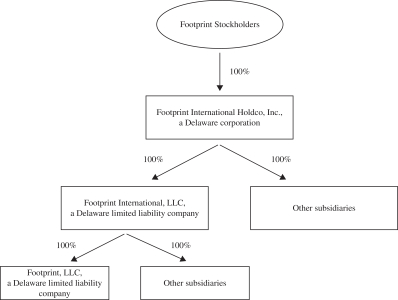. Each person who was or is made a party or is threatened to be made a party to or is otherwise involved (including involvement, without limitation, as a witness) in any actual or threatened action, suit or proceeding, whether civil, criminal, administrative or investigative (a “
proceeding
”), by reason of the fact that he or she is or was a director or officer of the Corporation or, while a director or officer of the Corporation, is or was serving at the request of the Corporation as a director, manager, officer, employee or agent of another corporation or of a partnership, joint venture, trust or other enterprise, including service with respect to an employee benefit plan (an “
indemnitee
”), whether the basis of such proceeding is alleged action in an official capacity as a director or officer or in any other capacity while serving as a director or officer, shall be indemnified and held harmless by the Corporation to the fullest extent authorized by the DGCL, as the same exists or may hereafter be amended (but, in the case of any such amendment, only to the extent that such amendment permits the Corporation to provide broader indemnification rights than permitted prior thereto), against all expense, liability and loss (including attorneys’ fees and related disbursements, judgments, fines, excise taxes or penalties under the Employee Retirement Income Security Act of 1974, as amended from time to time (“
ERISA
”) and any other penalties and amounts paid or to be paid in settlement) reasonably incurred or suffered by such indemnitee in connection therewith and such indemnification shall continue as to an indemnitee who has ceased to be a director, officer, employee or agent and shall inure to the benefit of the indemnitee’s heirs, executors and administrators; provided, however, that, except as provided in
Section
5.2
with respect to proceedings to enforce rights to indemnification and advance of expenses (as defined below), the Corporation shall indemnify any such indemnitee in connection with a proceeding (or part thereof) initiated by such indemnitee only if such proceeding (or part thereof) was authorized in the specific case by the Board. In addition to the right to indemnification conferred herein, an indemnitee shall also have the right, to the fullest extent not prohibited by law, to be paid by the Corporation the expenses incurred in defending any such proceeding in advance of its final disposition (an “
advance of expenses
”); provided, however, that if and to the extent that the DGCL requires, an advance of expenses shall be made only upon delivery to the Corporation of an undertaking (an “
undertaking
”), by or on behalf of such indemnitee, to repay all amounts so advanced if it shall ultimately be determined by final judicial decision from which there is no further right to appeal (a “
final adjudication
”) that such indemnitee is not entitled to be indemnified for such expenses under this
Section
5.1
or otherwise. The Corporation may also, by action of its Board, provide indemnification and advancement to employees and agents of the Corporation. Any reference to an officer of the Corporation in this
Article V
shall be deemed to refer exclusively to the Chairman of the Board, Chief Executive Officer, President, Secretary and Treasurer of the Corporation appointed pursuant to
Article IV
, and to any Vice President, Assistant Secretary, Assistant Treasurer or other officer of the Corporation appointed by the Board pursuant to
Article IV
of these Bylaws, and any reference to an officer of any other enterprise shall be deemed to refer exclusively to an officer appointed by the board of directors or equivalent governing body of such other entity pursuant to the certificate of incorporation and bylaws or equivalent organizational documents of such other enterprise. The fact that any person who is or was an employee of the Corporation or an employee of any other enterprise has been given or has used the title of “Vice President” or any other title, including any titled granted to such person by the Chief Executive Officer pursuant to
Article IV
, that could be construed to suggest or imply that such person is or may be an officer of the Corporation or of such other enterprise shall not result in such person being constituted as, or being deemed to be, an officer of the Corporation or of such other enterprise for purposes of this
Article V
unless such person’s appointment to such office was approved by the Board pursuant to
Article IV
.





